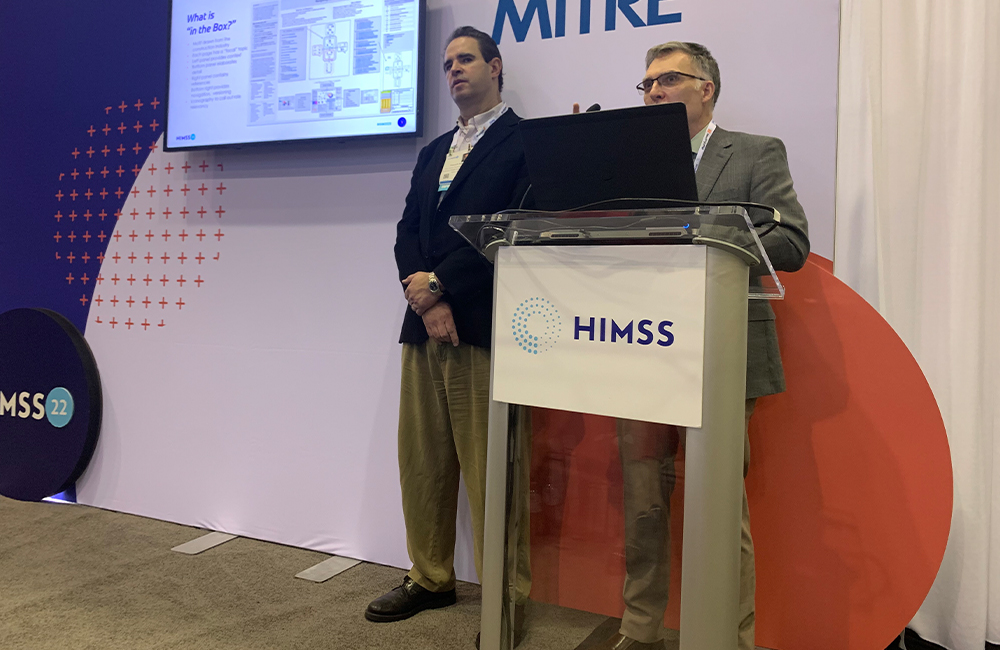i-VA Interoperability Platform Brings in Multiple Health Data Points for Integrated View

The Department of Veterans Affairs (VA) is developing a new “one stop shop” data management system to improve interoperability and clinical decision-making.
“Many people view interoperability as a technology challenge, but it’s not exclusively a technical challenge. It’s really a business challenge that ties into the technology,” Kenneth Rubin, VA’s senior advisor for standards and interoperability, said Tuesday during the HIMSS conference in Orlando, Florida. “Interoperability cannot be solved piecemeal.”
Because VA is the largest integrated health care system, one of the challenges the agency has faced is linking all its functions into a unified operation. To improve the agency’s interoperability capabilities, the agency developed Interoperable VA Blueprints, or i-VA, to provide guidance on how business needs, industry standards and systems can be linked together to improve veteran health solutions and outcomes.
i-VA provides an integrated view of the veteran with interoperability as a key cornerstone. The information hub has distilled hundreds of pages of content, data and information into a 22-page document to coherently display veteran information and improve decision-making for clinicians.
Throughout the development process, VA aimed to create a single platform that was consumable to users from all backgrounds. The platform integrates iconography to display data visualizations that ultimately improve understanding of key levers that drive health decisions.
“We wanted an integrated view,” Rubin said. “Think classic architecture … for the blueprints, we have a data view, we have a semantics view, we have a systems view, we have a business view. … One of the things this is illustrating is how the veteran fits in the broader health care landscape.”
From these blueprints, VA developed a list of key takeaways. The first is the platform provides an improved view of the veteran and their health journey, as opposed to VA as an agency. VA has included different types of data, like situational, longitudinal, patient preference and reference. The variety of data will better annotate the complexities across the veteran health landscape.
“It’s not about the VA, it’s about the veteran,” Rubin said. “While VA does have connections to community health providers, laboratories and first responders, the veteran might not be directly taking advantage of that. … I have just as much of an obligation to support veterans that don’t receive their care at VA as those that choose to.”
Rubin explained that to make an interoperable system fully functional, interoperability must be built in at the beginning of the product lifecycle. VA’s Interoperability Leadership Team, or VAIL, unifies business, data and systems to provide the right services at the right time to the right person in the right way so that they can make an informed decision and act on it.
“It starts at the design stage,” Rubin said. “To support a seamless care experience between private care and VA, then we have to think about the community at the earliest stages of the program. We have to plan this from the get-go, figure out what we have, then make informed decisions.”
This is a carousel with manually rotating slides. Use Next and Previous buttons to navigate or jump to a slide with the slide dots
-

Generative AI Demands Federal Workforce Readiness, Officials Say
NASA and DOI outline new generative AI use cases and stress that successful AI adoption depends on strong change management.
6m read -

The Next AI Wave Requires Stronger Cyber Defenses, Data Management
IT officials warn of new vulnerabilities posed by AI as agencies continue to leverage the tech to boost operational efficiency.
5m read -

Federal CIOs Push for ROI-Focused Modernization to Advance Mission Goals
CIOs focus on return on investment, data governance and application modernization to drive mission outcomes as agencies adopt new tech tools.
4m read -

Fed Efficiency Drive Includes Code-Sharing Law, Metahumans
By reusing existing code instead of rewriting it, agencies could dramatically cut costs under the soon-to-be-enacted SHARE IT Act.
5m read -

Agencies Push Data-Driven Acquisition Reforms to Boost Efficiency
New initiatives aim to increase visibility of agency spending, improve data quality and create avenues to deploy solutions across government.
5m read -

Data Transparency Essential to Government Reform, Rep. Sessions Says
Co-Chair of the Congressional DOGE Caucus Rep. Pete Sessions calls for data sharing and partnerships to reduce waste and improve efficiency.
5m read -

DOD Turns to Skills-Based Hiring to Build Next-Gen Cyber Workforce
Mark Gorak discusses DOD’s efforts to build a diverse cyber workforce, including skills-based hiring and partnerships with over 480 schools.
20m listen -

AI Foundations Driving Government Efficiency
Federal agencies are modernizing systems, managing risk and building trust to scale responsible AI and drive government efficiency.
40m watch -

Trump Executive Order Boosts HBCUs Role in Building Federal Tech Workforce
The executive order empowers HBCUs to develop tech talent pipelines and expand access to federal workforce opportunities.
3m read -

Navy Memo Maps Tech Priorities for the Future Fight
Acting CTO’s memo outlines critical investment areas, from AI and quantum to cyber and space, as part of an accelerated modernization push.
5m read -

DOD Can No Longer Assume Superiority in Digital Warfare, Officials Warn
The DOD must make concerted efforts to address cyber vulnerabilities to maintain the tactical edge, military leaders said at HammerCon 2025.
4m read -

New NSF Program Cultivates the Future of NextG Networks
The agency’s new VINES program looks to tackle key challenges like energy efficiency and future-proofing wireless tech.
21m watch




